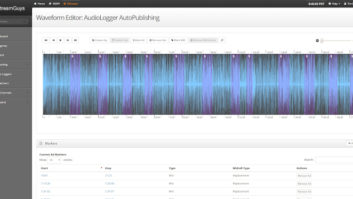The author is the chairman of Digital Radio Mondiale.

Ruxandra Obreja is the chairman of Digital Radio Mondiale. On a recent trip to Nigeria I had the chance to meet many well-informed professionals. One young man who works for a multi-national company told me that his data plan, which allows him access to the internet on mobile, exceeds the country’s average monthly salary.
When I asked him how young people in Nigeria obtain news, he explained that it was common for them to listen to the radio in the morning and then go to the internet later in the day for only a few minutes (to avoid reaching the monthly limit) to get updates. They subsequently disseminate the most important news via WhatsApp or Twitter to those who don’t have internet access at all.
This is just one example of why radio and terrestrial broadcasting may not be as endangered as some would like to make us believe. The internet, mobiles and all the new platforms, are popular, disruptive, even sometimes addictive, but they cannot fully replace radio or TV.
In fact, radio is still the top source of information across 36 African countries, according to Afrobarometre, with about half of the population using radio as the primary information source, even if daily usage is not increasing in some countries and decreasing in a few.
Radio listening in the United Kingdom is on the increase and radio advertising in India demonstrated an uptrend in 2015. So, it appears a little premature to eliminate breakfast radio from one’s phone to make place for Spotify.
While a narrative on the way all things related to broadband (including Wi-Fi, Bluetooth, radio-free dashboard in cars) is taking over the world and may turn heads, the fact of the matter is that, according to Edison Research, FM/AM radio is still being used by 84 percent of motorists in the United States, while only 21 listen to the radio online.
There is a lot of data predicting rising levels of data usage by the mobile industry. But how valid is this information? We are told that for the BBC, for instance, distribution over the internet is predicted to be on par but not to overtake the airwaves before circa 2027.
Radio is here to stay and the cyclical announcements and debates about its demise are highly exaggerated, while of course they shouldn’t be ignored. The medium needs to invest in its strong points and go digital in order to enrich the same great qualities that have always defined it — portability, immediacy, quality, adaptability and innovation — with the added choice of multimedia options.
Take the example of India, where DRM is currently delivered to nearly 50 percent of the population and listeners now have access to additional programs and music, when before they had a limited selection. FM today cannot offer this same choice, nor can the approximately 1 billion Indian mobiles on the market.
While the availability of digital receivers is still a challenge, how great it would be if listeners could access this new content on mobiles free of charge and not via expensive data plans.
In the U.K. it is possible for listeners to get all the radio, television and online services the BBC provides for as little as just under US$1. But that is, unfortunately, only the exception. Giant steps still need to be taken in order to offer the equivalent in other parts of the world.












